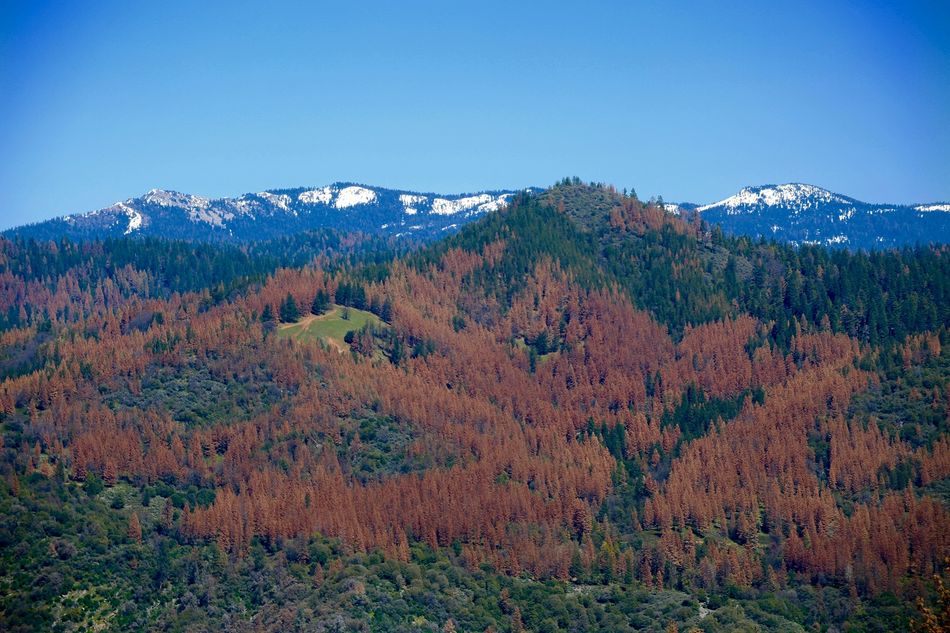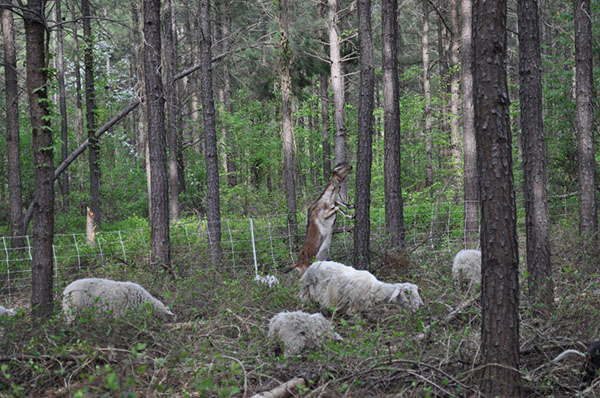Many trees in forests worldwide rely on natural fires to create growing conditions necessary to perpetuate the ecosystem, or to stimulate germination. However, for more than 100 years, humans have been suppressing frequent natural low-intensity forest and brush fires. Fire suppression has caused abnormally dense vegetation growth, which now represents fuel for destructive wildfires. According to the United States Forest Service, fire suppression has resulted in as many as five times the historic number of trees in some areas of the United States. Adding to the problem, fire seasons worldwide have become longer because changes in climate have created a hotter and drier environment. Mitigating the problem involves reducing vegetation density by using mechanical means, prescribed (planned) burning, or livestock grazing. Mechanical means—such as chain saws and bulldozers—for knocking down and chopping up vegetation are expensive and not always feasible for large and remote areas. As a result, land managers are more often using prescribed burning techniques and livestock grazing to prevent wildfires. See also: Drought; Fire and disturbance ecology; Forest; Forest fire; Forest soil; Global climate change; Global warming

Prescribed fires are fires that are intentionally ignited and controlled. For large and inaccessible wildfire-prone areas, prescribed fires are the best option for vegetation management. Yet fine particulate matter [<2.5 micrometers in diameter (PM2.5)] in smoke from these fires is a major concern, even though wildfires emit about twice as much PM2.5 as prescribed fires. For example, a study published in the Journal of the American Heart Association (April 2018) linked smoke from California wildfires in 2015 to increased risk of heart attacks and strokes, particularly for adults age 65 and older. In addition, many homes are now located in wildfire-prone areas, limiting the use of prescribed fires. See also: Air pollution; Wildfire impact on air quality

One possible alternative to prescribed fires is goats. The most intense wildfires, which also are likely to kill trees, are those that burn through the forest canopy. These are called crown fires. Small trees, shrubs, tall grasses, and other vegetation that allow a fire to climb to the forest canopy are called ladder fuel. Removing ladder fuel to mitigate, or at least minimize the damage from, crown fires can be accomplished using grazing animals—preferably goats, because goats find otherwise-undesirable vegetation, such as brush and shrubs, particularly appetizing. Goats are also more economical than mechanically removing vegetation. According to the U.S. Forest Service, the cost for goats to remove ladder fuel is $400 to $500 per acre, compared to $1200 to $1500 per acre for mechanical removal. The bottom line, however, is that regardless of the method used, reducing the amount of vegetation reduces the severity of wildfires. See also: Silviculture





